Your Short Guide to SAP Fiori
by Michael Management
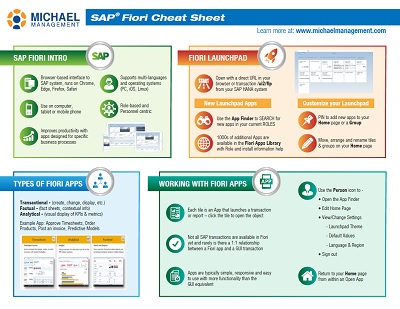 SAP Fiori is the user experience and design that empowers businesses to completely customize their experience using SAP.
SAP Fiori is the user experience and design that empowers businesses to completely customize their experience using SAP.
Fiori has been around for quite a while, which has only led to its fame among graphic designers, user experience developers, and productivity experts who understand its profound power. In fact, the fame of Fiori stretches far beyond the standards of SAP, and it’s now viewed as a gold standard among customizable user interfaces.
This is because Fiori isn’t just about designing one instance of a user interface. Instead, it’s predicated on the idea of creating a full, consistent experience across a single enterprise software that makes it easier for professionals to do their work well (and to do it quickly).
At the end of the day, this is why Fiori is such a strong component of SAP as a whole — it’s the way that companies help make their employees work smarter. But there’s a catch. Working in Fiori can be a challenge, especially if you’re new to SAP as a platform. Fiori is immense in its scope and potential, and that means you have to be well-versed in SAP in order to capitalize on that potential.
So if you’re learning Fiori now, what can you do to make the educational experience easier?
In this blog, you’ll learn some of the key points of SAP Fiori that can cause trouble for learners. You’ can also download a 100% free, easy-to-use cheat sheet to keep SAP Fiori fresh in your mind.
Download Free SAP Fiori Cheat Sheet
First, let’s start with the key parts of SAP Fiori.
The SAP Fiori Apps Library
To start, it’s important to talk about the SAP Fiori apps library. This is a part of SAP that contains pre-made Fiori apps that cover many of the common needs that businesses have throughout the world. This library is incredibly helpful, particularly to new developers, because they require minimal tweaking to make them relevant to an organization.
As a result, the library is one of the most powerful reference tools that you have as an SAP Fiori developer. Most of the time, you probably won’t have to create a new app in Fiori from scratch. Instead, you can use a pre-made instance from the library, make a few tweaks to finalize the setup, and achieve the goal you need in a fraction of the time it takes to code from scratch.
SAP Fiori General Journal
The SAP Fiori general journal concerns itself first and foremost with SAP’s general ledger.
You most likely won’t have a direct connection to the general ledger since that’ll be managed by someone directly involved in finance — potentially even the chief financial officer. However, you will be able to parse, structure, and display data from the general ledger so that your organization can review financial information at a glance.
This is important to understand because developers and designers rarely have to deal with direct financial data. But in SAP, financial data is essential to most of the software’s uses, which means that Fiori developers must understand it and, even more importantly, understand how to show it.
Because of this, a lot of SAP Fiori developers can get bogged down in the details of a general ledger, what it contains, and how to interface with it (without changing it). Those are all reasons why lessons like the Fiori general journal boot camp exist.
This “boot camp” goes through the information you need to know about general ledgers from the context of a Fiori designer.
The end result is that you learn more quickly, you work more knowledgeably, and you grow in your understanding of SAP.
SAP Reports & Embedded Analytics
While the general ledger is important for understanding where and how you’ll be pulling data, you’ll also have to understand the methods of displaying data in general.
SAP Fiori is, as we’ve established already, robust in almost every way. This means that you could have multiple ways of achieving a certain outcome, especially when it comes to reporting on visual data.
It’s up to you to learn and understand these different methods so that you can prescribe a specific approach to any project. Some needs may require a quick solution while others may require a sophisticated solution.
As an SAP Fiori expert, you’ll be expected to know how to choose among the many options that Fiori gives you in order to achieve the best possible outcome for a project.
Legacy Assets
The topic of legacy assets is a constant point of challenge for almost every SAP Fiori developer as they’re initially learning these skills. This is because SAP has a long, storied history as an industry leader in enterprise software. As a result, some companies have been using it for years — even decades.
SAP has changed in that time, and it’s possible that some of a company’s most important reports and financial figures are stored in older instances of the software. That means if a certain area of your employer’s SAP portal hasn’t been updated in a few years, you could be dealing with software structures and UX elements that are no longer supported.
This is perhaps the most open-ended part of a Fiori designer’s work, as the solution to connecting and displaying legacy SAP assets can vary depending on when the original assets were created (among other details).
This is also why it’s so important for you to understand legacy assets as a concept — even before you get certified as an SAP Fiori specialist.
Download SAP Fiori Cheat Sheet
Are you ready to continue on your progress to becoming a certified SAP Fiori expert?
We have the perfect thing for you — a cheat sheet that covers a lot of the information we discussed above and then some.
We understand what it’s like to go through the SAP certification process, and we know how broad the software itself is. It can feel overwhelming to learn and process all of that information, especially if you’re learning on your own.
That’s why we created this free cheat sheet, as well as a library of on demand Fiori training courses led by SAP experts.
by Michael Management
More Blogs by Michael Management
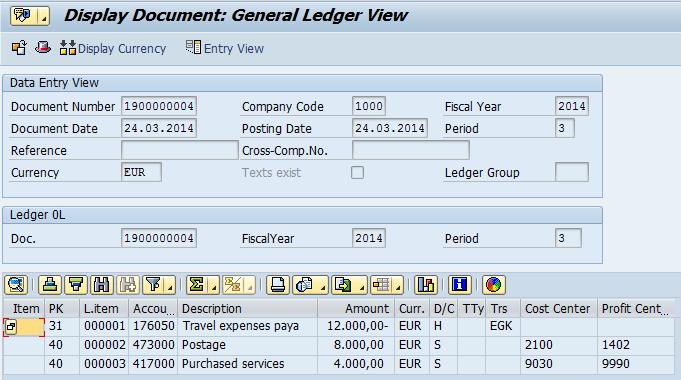
Unlock Financial Precision: The Critical Role of...
Mastering Document Splitting in SAP Central Finance: Essential Ins...
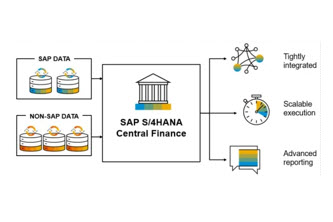
Unlocking Success: The Strategic Imperative of Group...
Why is Group Reporting Critical for SAP Central Finance? Masterin...

Kickstart Your Career: Mastering SAP Inventory...
SAP inventory management is an in-demand skill set from large companie...
Related Blogs
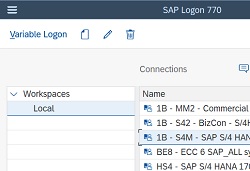
New Features in SAP GUI for Windows 7.70
SAP has recently released the new SAP GUI for Windows 7.70 and this ar...
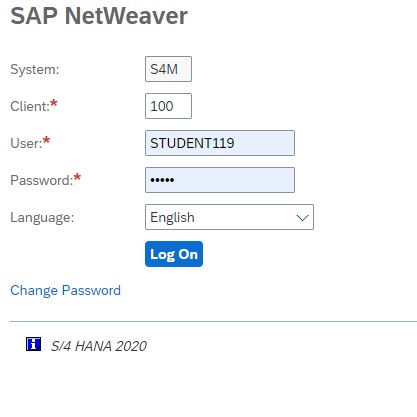
5 Advantages of Private SAP Access
Michael Management offers both private and public SAP Access. One of t...

SAP Controlling Module: What You Need to Know
The SAP Controlling module is one of the most complex and demanding components...
.png)

